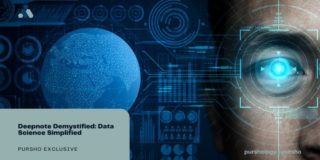Any e-commerce website development’s crucial aspect is managing the backend functions. Your clients will reach out to you through different corners of the planet. Your backend should handle your data fetching directly from your server before it shows to the front end. You would also have various additional features like payment gateways, shipping, and supplier management. You also have a variety of alternatives that you may take advantage.
The backend procedure should perfectly support you in retrieving the data through your server & showing it over the front-end. With MERN Stack, you can develop websites that would set you out from the rest. MERN Stack has played an essential part in several E-commerce platforms. It has helped everyone shape the E-commerce industry. With many E-commerce websites increasing recently, it has been a terrific trip for everyone.
This means that after designing the REST APIs with Node, Express, and MongoDB, we would leverage those APIs in our React frontend. As a result, it would be pretty helpful because it would teach you about REST API concepts and aid in integrating these frameworks. Therefore, in this section, we will discuss the project’s fundamentals and set up the project. Here we are giving some reasons to choose this:
MERN technologies provide crucial advantages over the traditional LAMP stack that have us completely smitten with this MERN stack development.
Obstacles frequently encountered Regarding LAMP Technologies:
The open-source foundation and versatility of LAMP have made it an industry standard for ready tech stack solutions. It streamlines the process and enables development teams to quickly and affordably create MERN Application eCommerce web apps.
However, using it comes with several difficulties. It presents several security concerns because it is not highly typed or pre-compiled. Second, because LAMP relies on the non-scalable MySQL database, businesses now want NoSQL-based databases like MongoDB. Additionally, the resource-intensive multi-threaded Apache server utilized by LAMP slows down the e-commerce platform.
The LAMP stack is comprised of technologies from many programming languages, which makes the workflow inhomogeneous and makes it challenging to handle data transmission and transitions between the front end and back end. In contrast, the MERN stack is fully based on JavaScript.
Thus, we think the MERN technology and mern stack web development company should be used to create your e-commerce site. The advantages of using this technology stack are as follows:
Advantages of MERN Stack
- Better Performance: PHP is the foundation of all open-source platforms like WordPress and Shopify. On the other hand, the MERN stack incorporates Node.js’s capabilities, which make it possible to manage a succession of activities, even if they are done asynchronously. This improves a program’s capacity to handle demanding events and data-driven applications. As a result, the entire application’s performance is improved, and its speed is multiplied.
- Greater Security: The MERN stack’s applications are simple to integrate with secure hosting companies, protecting data from online threats. These interfaces support the administration of user and device security and assure the long-term viability of data storage, giving you access to a safe and burglar-proof e-commerce platform.
- High Scalability and Cloud Compatibility: Since products are constantly added to an e-commerce site, scalability cannot be compromised. The MERN stack eCommerce App also contains the NoSQL database MongoDB, which is highly scalable and compatible with cloud storage, and Node.js, which optimizes processing capabilities. So, it is simple to handle the data collected from the e-commerce platform anywhere in the world.
- The PHP-based LAMP stack relies primarily on back-end programming and provides a static user experience because of the amount of HTML content and server-side scripting. On the other hand, the MERN stack offers Model View Controller (MVC) architecture, which enables limitless platform frontend customization.
- Code reuse: A website with MERN technologies has interchangeable and reusable parts. This indicates that pieces of code from one project can be quickly and easily used in other e-commerce systems. Due to the smooth and speedy development of e-commerce websites made possible by these production-approved reusable components, you can receive your product with the shortest turnaround time possible.
Building Stack eCommerce Web App
As a result, the following functionalities would be included in the application we would be developing:
- JSON Web Tokens-based authentication (JWT).
- The capability to add, update, view, and remove every item in our store.
- The choice to add or remove things from the shopping basket.
- Immediately after the user updates the cart, display the total bill and update it.
- Storing the JWT in local storage ensures that only logged-in users can make purchases.
- The option to pay and checkout fills the order and removes items from the cart.
These are the fundamental components of our application, then. Let’s now familiarise ourselves with the technology stack used to construct this application.
Frontend – React will be used as the frontend library on the frontend side. Redux would be used for state administration. React Bootstrap library would be used for the interface’s fundamental design.
Backend – On top of Node.js, we would use the Express module for the backend side. To connect to our MongoDB database, we would utilize the mongoose tool. Express would be used to build REST APIs, and the React front end would use these endpoints to communicate with the backend.
Check out this post, which deals with the topic elegantly, to learn more about establishing REST APIs with Express, Node, and MongoDB.
After reading this one, you will learn how to construct REST APIs quickly and easily.
Additionally, if you are new to React, this short article will be an excellent place to start. This article describes how to create a straightforward Todo app using React. Understanding CRUD (Create, Read, Update, and Delete) principles would be beneficial.
So, we now have an overview of what we will build, so we would like to start building the project. First, we would need to download Nodejs in our system since it would allow us to use NPM (Node Package Manager).
Now will learn how to construct REST APIs quickly and easily.
Since we’re going to name our entry file server.js rather than index.js, we modify the entry point from index.js to server.js. Since it will function like a server, calling it such makes more sense. All other fields are left empty.
Using npm, we would now need to install some dependencies, which our package.json file would then automatically add as dependents.
You may update your file by copying the development dependencies from the package.json file. When all the dependencies indicated in the package.json file have been installed, we can execute the npm install.
Once these dependencies have been installed, let’s examine the importance of the packages we just installed.
- Bcrypt— We’ll use this to authenticate users in our app. The passwords of our users would need to be kept in our database. Therefore, since plain text passwords are easily cracked, it is never advised to store them. Therefore, before saving the passwords, we hash them using the bcrypt library. When we utilize it, we will go into greater depth about how it functions.
- Concurrently— This package allows us to run two processes simultaneously, running our server and client simultaneously without needing to use two different terminals.
- Config— This straightforward package enables us to conveniently retrieve our vital data, such as secret keys, database IDs, etc., by storing it in a separate JSON file.
- Express — This is the library we would develop our REST APIs with on top of Node.
- JSON web token— This facilitates the production of JWTs for authentication.
- Mongoose– These aids in connecting MongoDB to our Express application.
- Validator– It assists us in validating various items, including emails. It comes in a tiny package and aids in validation.
- Nodemon– It keeps our server operating and enables us to restart it whenever modifications are found because changes don’t need to wait for the server to restart.
We have incorporated a few scripts to make running the server and client easier. Let’s look at them now: –
- start — The server.js file is run using Node. For updates, it would need to restart.
- server – It runs the server.js file using nodemon, which enables it to restart the server and update modifications automatically.
- client — Launch the client with this command. We use a prefix to tell it that we want to move into the client folder first and then execute the command.
- dev — It uses concurrently to operate the server and client simultaneously.
So, let’s make a server.js file in the root directory right away. Let’s begin constructing the server.js file.
As you can see, we obtained our database URI using configuration. In development, we will utilize port 4000 instead of any other port value present in the environment variable.
After successfully connecting to the database with mongoose, we begin to listen for requests on the port, indicating that the server is up and running.
Then, we would establish several folders to store our routes, controllers, and model files. By doing this, we can keep our code readable and maintainable while reducing clutter. Thus, we will address all of these issues in the following sections. To grasp the authentication properly, we would devote some time to it. The models, routes, and controllers relevant to Items, Cart, and Orders would then be covered in a separate section.
Lastly,
The MERN Stack development would allow your website to confront a lot of concurrent visitors. By making sure that MERN Stack development is done better, you can ensure that your e-commerce needs are addressed efficiently. While you set up a new e-commerce site with the aid of MERN stack development, you are going to cater to at least 10,000 concurrent consumers consistently on a daily basis. Node.js will allow you to grow further with the support of Node. js- relevant microservices architecture. This would also permit you when you are ready to manage millions of clients simultaneously. MERN Stack will supply you with all the essential assistance. It would help you manage all those smoother web development procedures with your MVC design. This entire information will help you to developing website and get rough estimate of website and cost of mobile app development.




